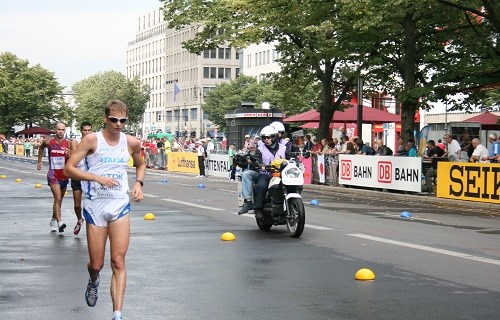New analysis could be a turning point in Alex Schwazer’s doping case
Last month, the Italian Scientific Investigation Department’s (R.I.S.) laboratory in Parma revealed the first results regarding the analysis made on Italian race walker Alex Schwazer’s urine, demonstrating the presence of an atypical concentration of his DNA in the two studied samples (A and B).
These are the same samples that caused Schwazer an eight-year disqualification, after they were found positive at a doping test conducted on the 1st of January 2016, in the run up to the Rio Olympics.
However, this discovery could be a turning point in a lengthy and controversial legal battle that the athlete has been fighting in defense of his innocence.
Too much DNA
Judging from the results coming from Parma laboratory’s tests, the concentration of Schwazer’s DNA in sample B appears to be three times higher than in sample A. While it is approximately 437 nanograms microliter in sample A, in sample B reaches 1187.
According to Italian journalist Nando Sanvito, who wrote a press investigation on the case for ilsussidiario.net, the detected numbers are much higher than what they should be according to scientific studies on the topic.
“If the scientific literature, produced by the same laboratories accredited at Wada, says that the urine stored at -20 degrees after one week reduce the quantitative value of DNA to 1/7, we must think that after 26 months they must still contain a few picograms at most. The DNA of Schwazer has instead a concentration of hundreds (sample A) or thousands (sample B) times higher than normal,” he wrote on ilsussidiario.net.
“When urine is stored at −20°C, around 75% of the DNA degrades within 28 days, making a quantitative recovery difficult after this period,” says a study on ‘DNA extraction from long-term stored urine’ published by the BMC Nephrology.
This discrepancy between the two samples does not prove anything for the International Association of Athletics Federations (IAAF), who has decided to commission a scientific study in Geneva showing that the divergence between the sample A and B has no value, reports Italian newspaper Repubblica.
Meanwhile, the R.I.S chief Giampietro Lago has commissioned a study on approximately 100 people, in order to monitor the DNA separated into two samples to understand if the presence of such differences is actually possible. Apparently, in none of tests showed the same level of discrepancy between two samples.
A final report will be presented on 5 September, when the R.I.S. department outlines its results to the judge of preliminary investigations, Valter Pelino, who will then evaluate them in details.
“My case should make everybody think”
In a recent interview with the Italian newspaper Alto Adige, Alex Schwazer expressed his views on the possible manipulation of his urine samples.
Mycase is a terrible one that must make everyone think, because a urine sample that was initially negative has suddenly become positive," he stated.
Schwazer seems to be confident that the new analysis conducted in the Parma laboratory will be in his favour and he hopes that this will be the end of a long fight for justice. Even though he is not planning to go back to competing, he wants to clear his name.
“I can only say it will be a long battle. Even when the expert report will finally be presented, we can’t claim victory just yet, it will be a starting point, not the terminus,” Schwazer said.
“If we keep on doing like this; making continuous examinations, we will arrive at the truth eventually,” he added during the interview.
Schwazer’s lawyer Gerhard Brandstaetter, who believes in the innocence of the athlete and trusts the new scientific tests, agreed with his client.
“Our experts tell us that there are heavy anomalies in the urine. We are convinced and sure that there have been some manipulations and we hope that we can prove it, since what has been done has been done in a scientific way," Brandstaetter said to Il Fatto Quotidiano.






